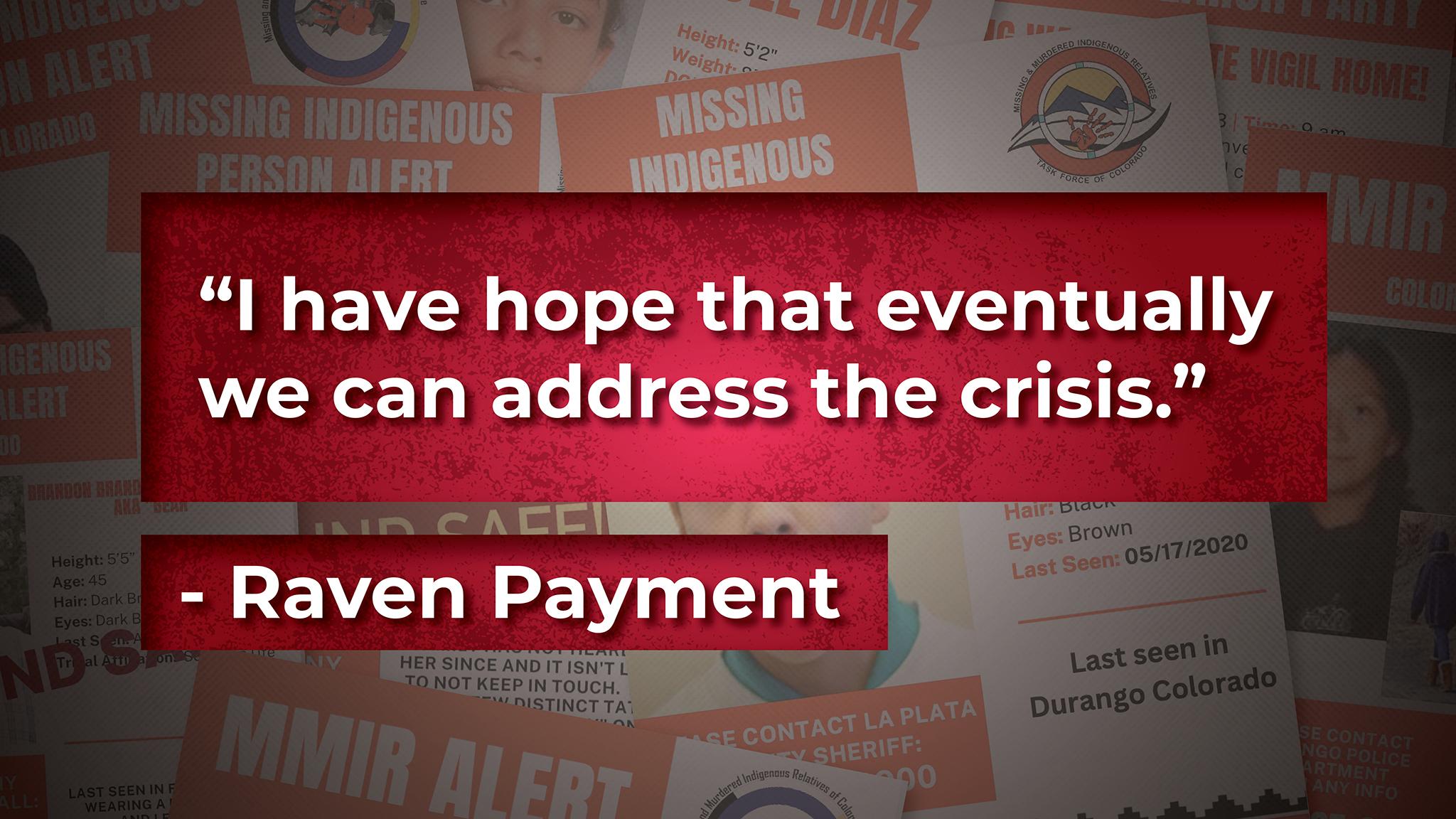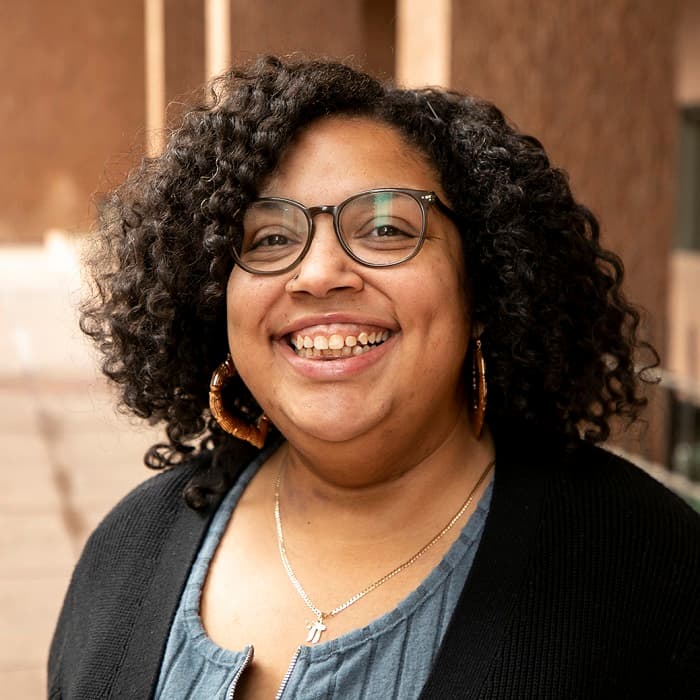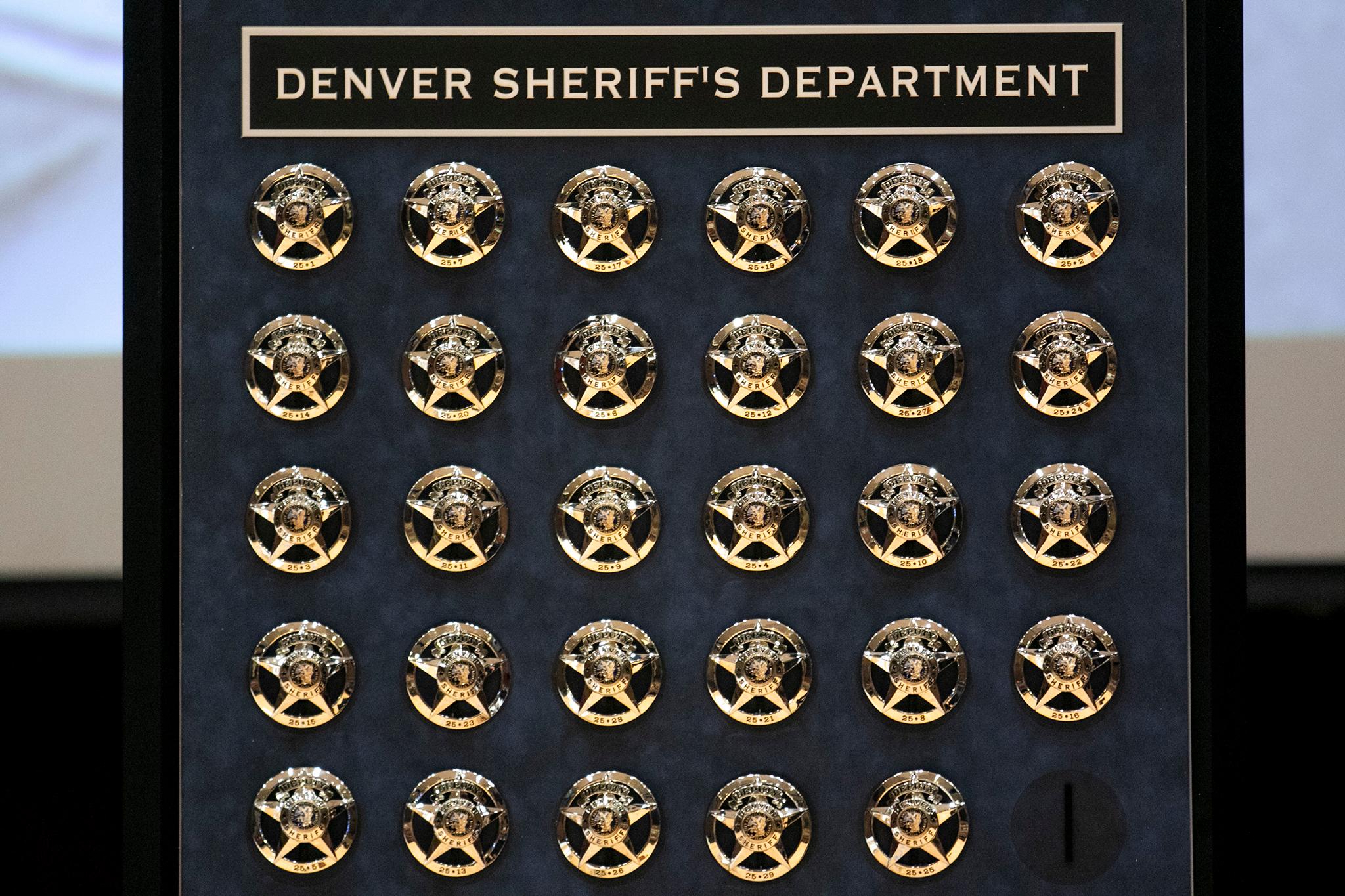Updated June 5 at 3:27 p.m.: Chasity Mueller has been safely located, according to the Colorado Bureau of Investigation. This article has been updated to reflect that.
When Kelly Reum received a call from her daughter, Rakel Morigeu-Reum, on April 17, she knew trouble was brewing.
Rakel's voice sounded hoarse. She was calling from the Swedish Medical Center in Englewood after being physically assaulted. A man she was with choked her at a light rail station.
Rakel lives in Montana, but in March, she came to Denver seeking help for substance abuse issues.
It seemed Rakel was doing well. In a March 19 Facebook post, she said the day marked 10 days of her being sober. Kelly commented, "I am proud of you! I am thankful that you made the choice to live!"
But that phone call changed the trajectory of Rakel's time in Denver.
The day after Rakel called from the medical center, Kelly received a text from a random number, stating that Rakel was in danger. And on April 20, Kelly received a strange call about Rakel owing someone $1,000.
Radio silence followed. It wasn't like Rakel to not respond to calls or texts, Kelly said, especially given their family history.
Rakel is Indigenous, affiliated with the Confederated Salish and Kootenai Tribes in Montana, and her family has participated in searches of missing Indigenous women and tribal members for years.
Rakel's cousin, Jermain Charlo (who also goes by Jermain Morigeau) has been missing since 2018 and the family continues to search the mountains of Montana for her.
So while she didn't always immediately respond to her mother, Rakel eventually would always call or text back.
"I just keep calling and texting and hoping," Kelly said. "She gets mad at me and things like that, but she would've responded to somebody."
Kelly jumped into action and started reaching out to folks in Denver to find her daughter.
One of her contacts pointed her towards the Missing & Murdered Indigenous Relatives Task Force of Colorado Facebook page, where Kelly learned about the Missing Indigenous Person Alert (MIPA). Kelly contacted Denver Police on April 28, Rakel's birthday, and the next day an alert was issued.
The MIPA system, and the accompanying Office of Missing and Murdered Indigenous Relatives in Colorado (MMIR), were both established in late 2022 as a way to help bring awareness and eventually solve crimes involving the Indigenous community, which sees a disproportionately high rate of missing people and homicide cases compared to other racial or ethnic groups.
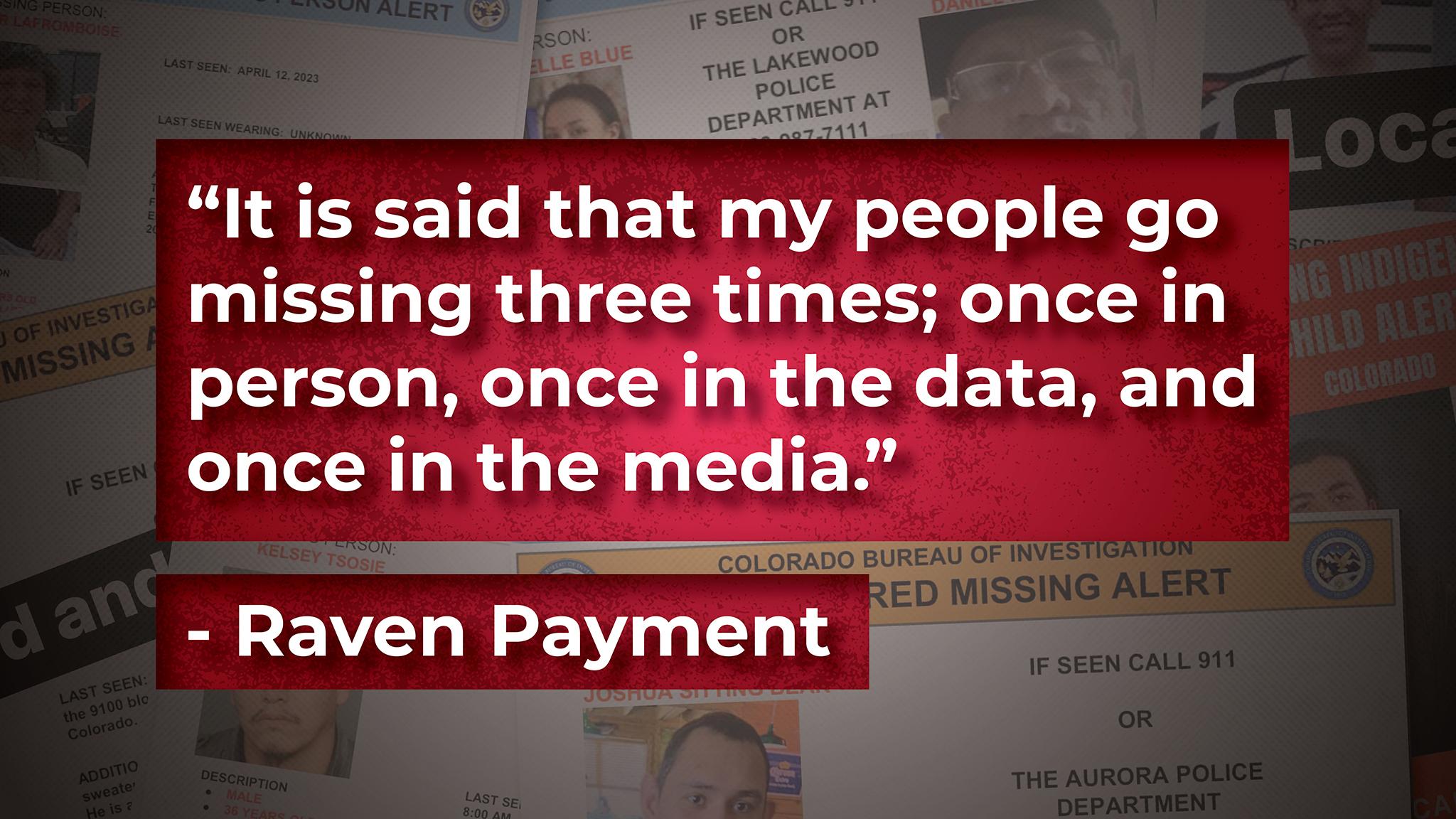
According to the Centers for Disease Control and Prevention, Indigenous women are nearly three times more likely than white women to be killed in a homicide. History Colorado reports that four out of five Indigenous women will experience violence within their lifetime, more than half of Native women will experience sexual assault or domestic violence, and 96% of that violence is perpetrated by a non-Native person.
Many of the missing or homicide cases end up unsolved. Some are even fully unknown because the missing or deceased person was never identified as Indigenous.
The goal of the MMIR task force is to push these cases into the limelight, and the complementary alert system was created to help stop the missing cases from going cold.
"It is said that my people go missing three times; once in person, once in the data, and once in the media," said Raven Payment (Ojibwe and Kanyen'kehà:ka), a member of the Task Force. "In Colorado, we currently have one Native person that goes missing a week...We consider this a crisis...Right now, we're kind of in reactive mode, just trying to help as terrible things happen. The goal in using this data is understanding where to allocate resources and eventually we'll be taking a more proactive approach, preventing crisis and preventing violence as opposed to just reacting to it after the fact."
With time and grim statistics against them, Kelly and the task force had to act. They planned out search parties and notified as many people as possible about Rakel's disappearance.
And with the alert now in effect, Kelly traveled to Denver on May 6 and met with members of the task force for the first search party.
They began near the light rail station and hospital in Englewood, where Rakel had most recently been seen. They found no sign of her.
However, later that day, Kelly received the call she was praying for.
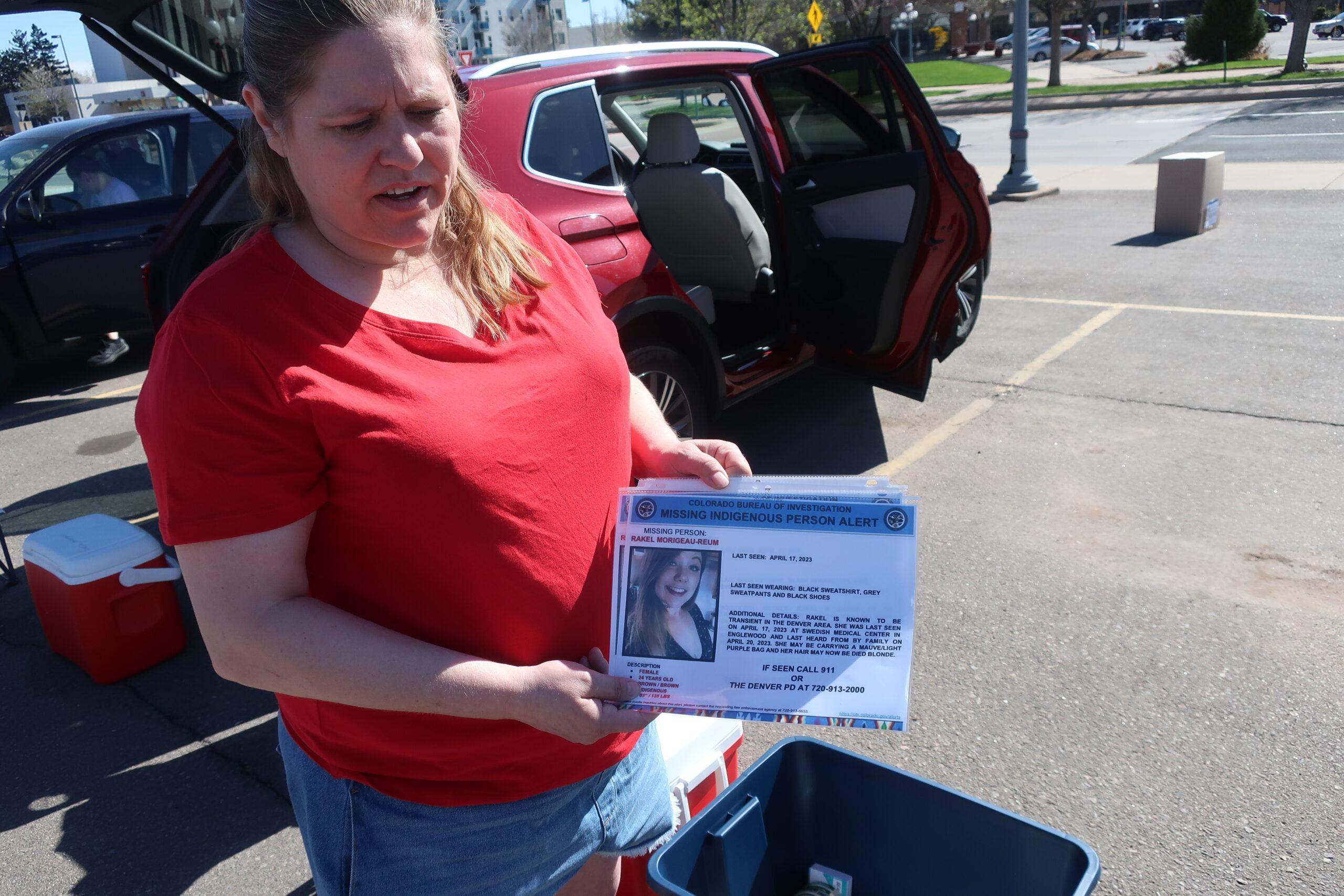
Denver Police had found Rakel that same day and mother and daughter were reunited.
"I couldn't believe that the first day we looked, we found her," Reum said. "This wouldn't have happened if I didn't contact that group...and I'm thankful they got the alert out right away. An officer ran her name and if that alert wasn't there, I would not have found her."
So far, the alert system is doing what it was intended to do, as was in the case of Rakel, by finding people in time or before their cases go cold.
According to the CBI, 17 alerts have been issued as of May 31.
The most recent one issued, at time of publication, was for Chasity Mueller, a 36-year-old unhoused Lakewood resident, for whom the alert was issued May 23. CBI tweeted on the afternoon of June 5 that Mueller had been found.
Out of the 17 alerts, one person was found dead and the rest were found safe.
"I would say that it's a success because we've located the folks and it's helped to raise awareness about the cause, that this is an issue in our state that we need to be aware of," said Audrey Simkins, an investigative analyst with CBI. "With any new program, you're going to have a few bumps along the way and we learn as we go... I think the more communication there is, the more education that's out there, the more folks know it's available then it is going to get used more frequently."
While the success rate, so far, is high, there are communication issues that need to be addressed, particularly between law enforcement and families of the missing, according to Simkins and Reum.
The alerts are issued by CBI at the behest of local law enforcement after they inform the state agency that a missing person is Indigenous. It's a simple click of a button when officers type in demographic information for the missing person. It's a small action that doesn't always occur right away whether because officers aren't asking for proper demographic information or families aren't mentioning it.

With eight Indigenous alerts issued, the Denver metro where the system has most been utilized, followed by El Paso County and Jefferson County with three alerts each, according to CBI.
DPD's Missing Person's unit is a two-person team supervised by Lt. Richard Laber. He said since the alert has rolled out, communication issues are smoothing out, especially with ensuring officers are asking the proper demographic question.
"As more of those alerts are issued, I think the officers will just become more cognizant of the fact that that's probably a question that they need to ask," Laber said.
Kelly said when she first contacted DPD about Rakel, she had to leave a voicemail. But once she did speak to an officer, she didn't give them a chance to ask the demographic question. Members of the Facebook task force told her what to say to police, including specifically mentioning that Rakel was missing, Indigenous and that a MIPA needed to be issued.
The Task Force typically reaches out to families once they learn a missing person is indigenous and they explain the alert to them. This makes it easier for families to force police to request the alert.

In Jennifer Black Elk's case, she received a similar message from members of the Facebook task force, but her experience was still difficult.
Her family, who are members of the Lakota tribe, was the first to utilize the alert system.
Black Elk's nephew Wanbli Vigil was last seen on Dec. 29, right before the alert was officially active. Vigil was living with Black Elk in West Colfax and left the apartment that day with his chanupa, a ceremonial pipe. Black Elk assumed he went to pray and would later return.
Black Elk contacted police days later, but an alert wasn't immediately issued. She knew about the alert system, but didn't know how it worked until Payment reached out and pushed her to tell DPD that an Indigenous alert was needed.
Black Elk's son Kari said there were big communication issues with the family going back and forth between DPD and CBI to determine how the alert should be issued and by whom, but ultimately, it was issued on Jan. 3.
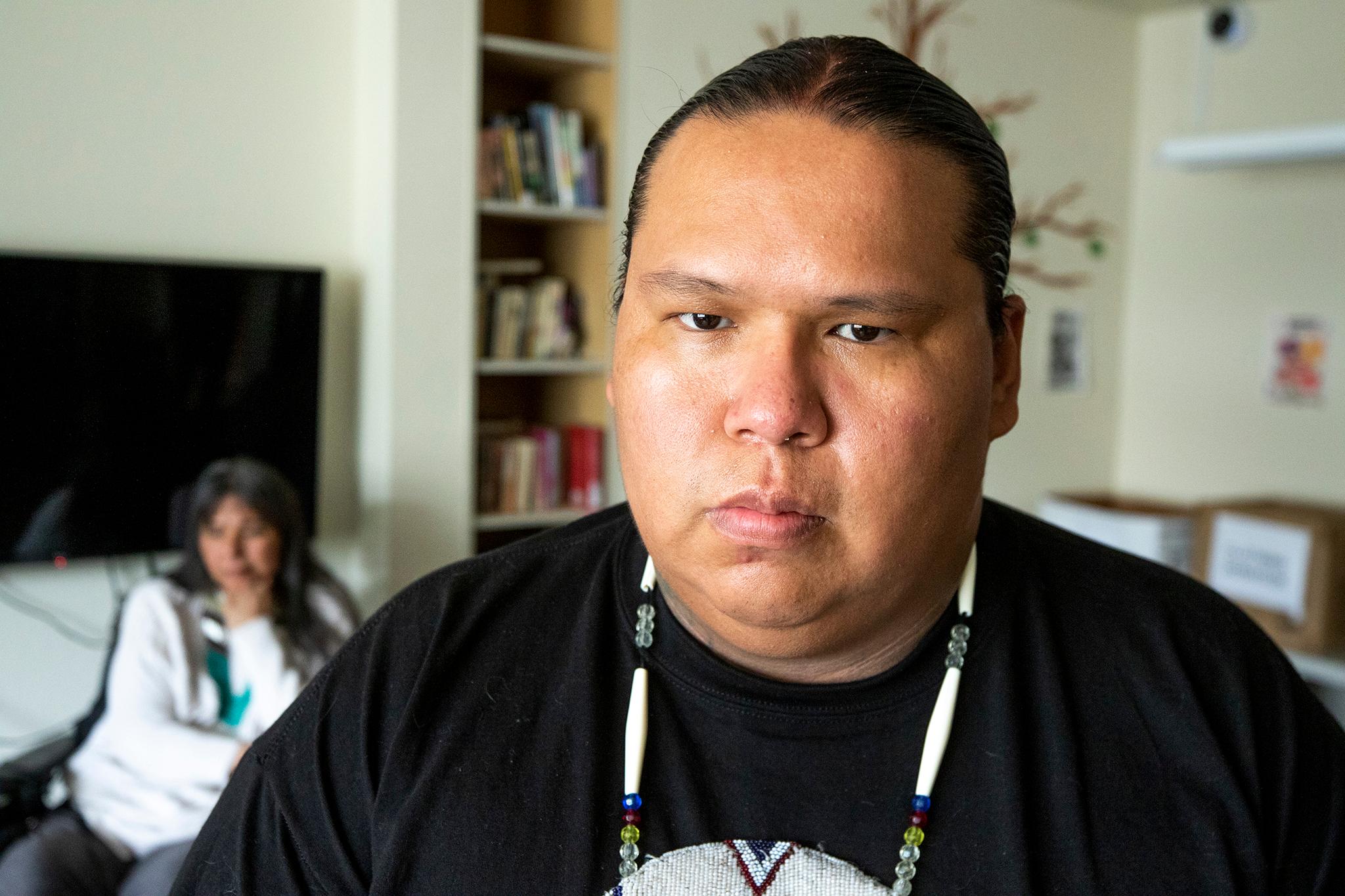
"Time is of the essence. Every second, every minute," Black Elk said. "I never would have thought that our family would've been the first to utilize the alert system. We weren't notified about anything until Raven. I didn't know the channels. I didn't know I was supposed to call anybody or they didn't mention anything either...I learned the ropes the hard way, but at the same time I was grateful that the MMIR was there to help us."
Vigil was later found dead on Jan. 6, a few blocks away from their home. Authorities determined Vigil's death was a suicide.
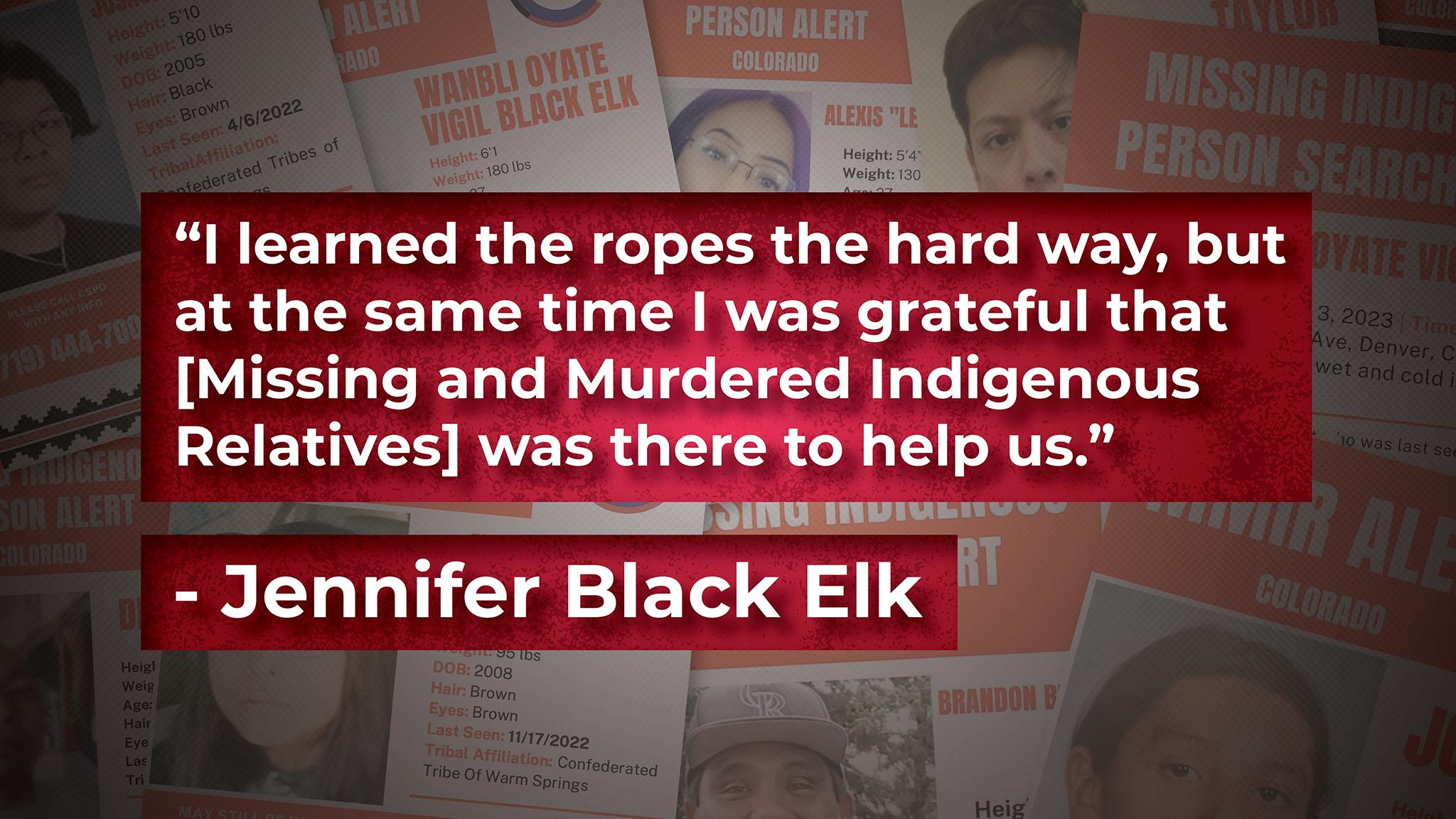
The Black Elk family members agree that while getting the alert out was tough, especially with it being so new, they were thankful that it existed.
"My little bro was part of my war society that's been passed down from my grandfather to me from the Black Elks," Kari Black Elk said. "I still believe he's a warrior in the spirit world. He was the first one to utilize the alert system and our family was strong enough to see the kinks that needed to be straightened out inside of the alert system. I'm always here for the families that do have relatives and people still missing."
The Black Elks said those "kinks" are there because communication needs to be better. From folks not knowing about the alert, to local law enforcement not knowing to or simply not checking off the Indigenous demographic box, to even what happens after a person is found.
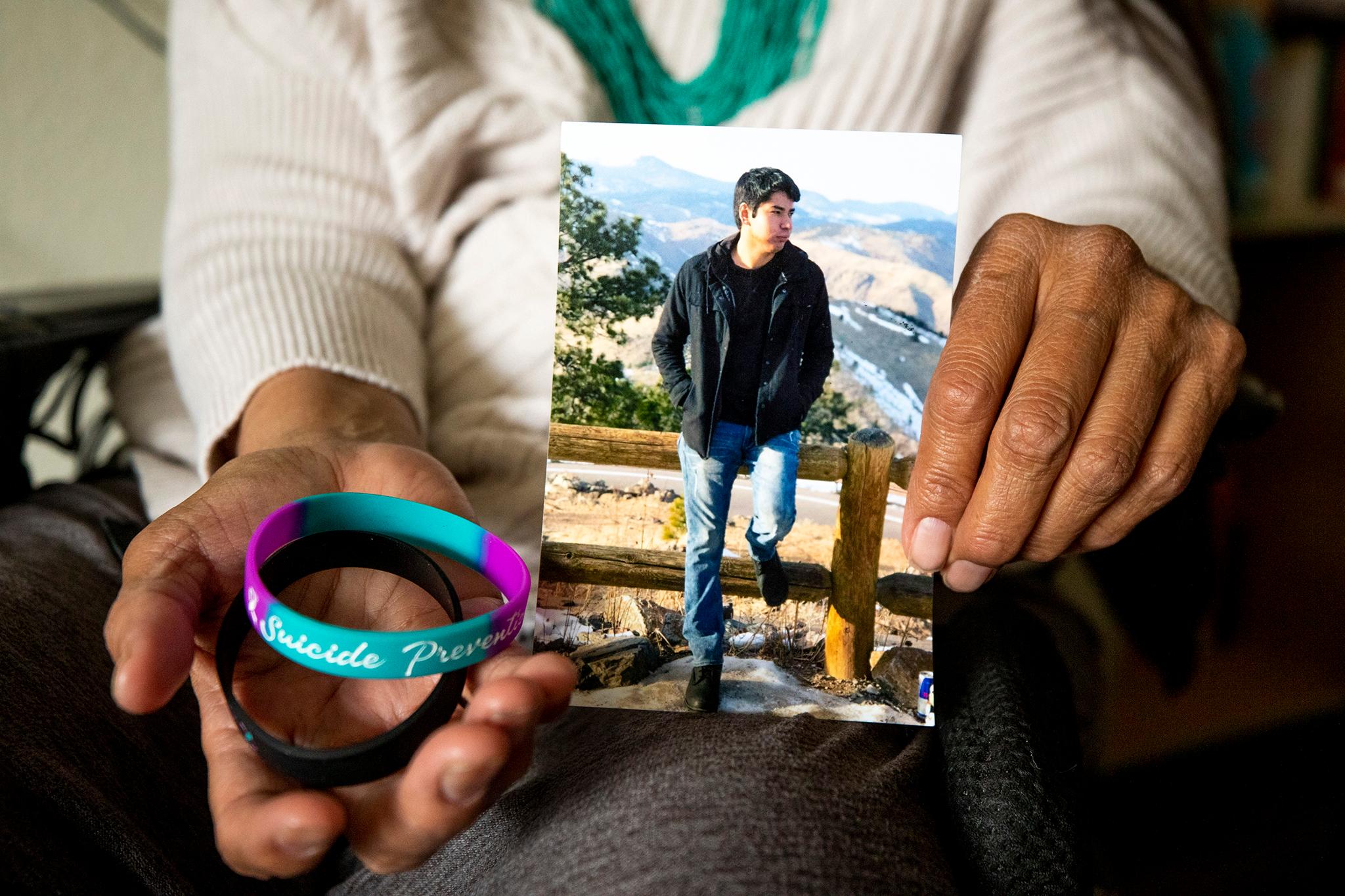
CBI and DPD agreed and said they are continuing to provide outreach services to groups letting them know that the alert system exists, but they added that improvements have been made in terms of keeping law enforcement informed on alert protocols.
The influx of alerts over the last few months could be proof that the outreach is working. Five alerts were issued in April, including Rakel's, the most alerts issued in a month since the MIPA was created.
Despite those improvements, law enforcement officials need to build trust within the Indigenous community to make sure families make the needed reports, Payment said, adding that officials also need to remove their ingrained prejudices against the Indigenous community.
Payment said with missing person cases, many young people are assumed to be runaways. DPD considers those incidents low-priority, even if the person isn't Indigenous.
She also hopes that the MMIR office expands and offers more services for the community, such as aftercare treatment. DPD said once a person is found, depending on the circumstances, some assistance is offered. For example, if a found person was suicidal, DPD would help them be medically evaluated.
Kelly said her daughter was found by an officer who just happened to run her name because she was staying in a tent in an alley. Once identified, Rakel used the officer's phone to call her mother and then the officer left. She wasn't taken to a precinct or her family. Laber said that is protocol.
Despite Rakel recovering from the experience of being assaulted, Kelly said, nothing else was offered to her as far as therapy or substance abuse treatment.
"One of the things that we've looked at in terms of what happens after the fact is, okay, what sort of resources are needed? Is this an unhoused individual? Is there an addiction? Is there a trafficking component," Payment said. "We want to be able to not just refer them to resources, but help walk them through what those resources are. Our intention with the office of MMIR was that that office would be able to handle that. It's a baby office with really only one person working it right now."
But that may change.
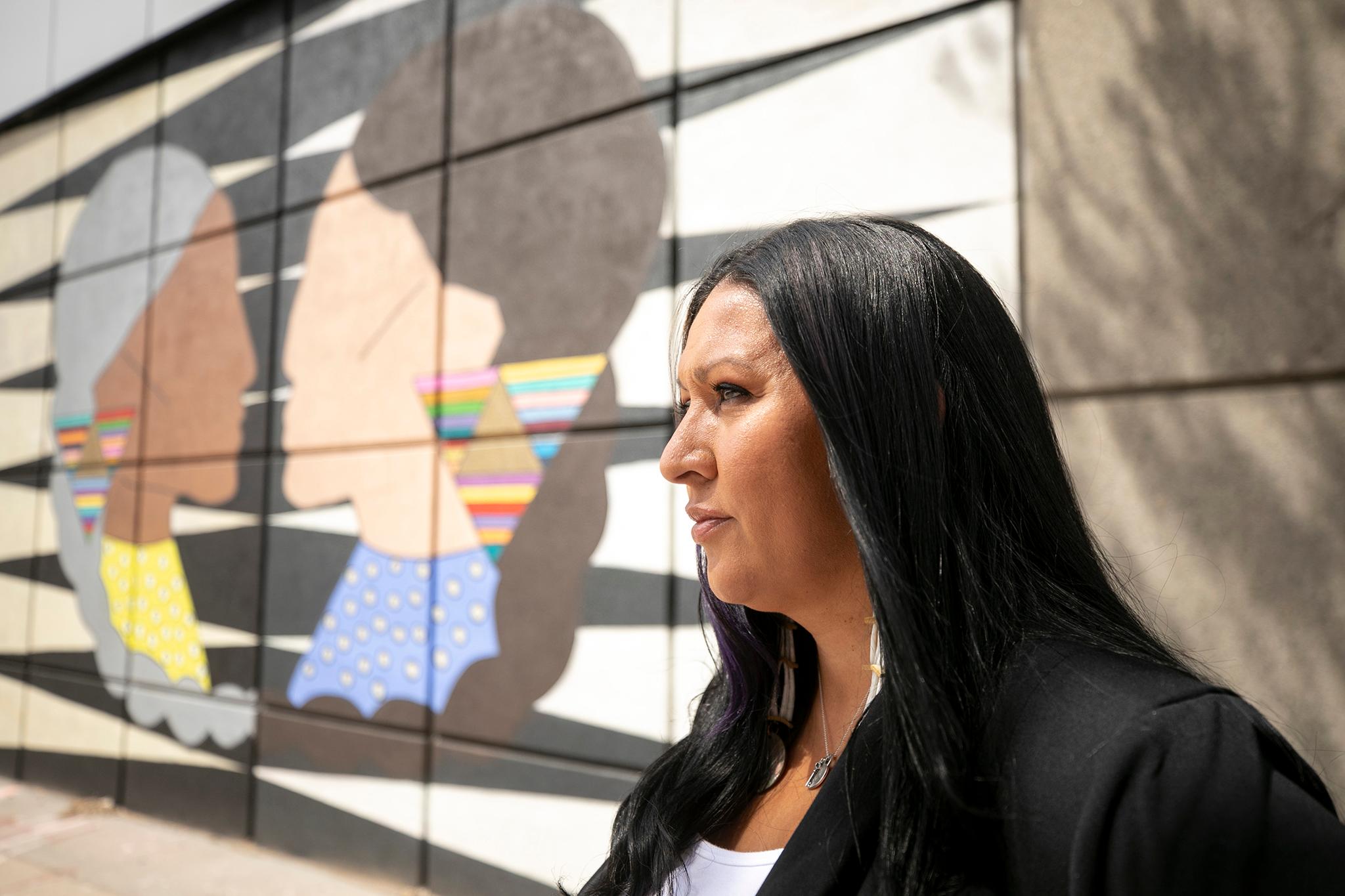
A proposed bill to expand the office is currently sitting on Gov. Jared Polis' desk. Senate Bill 23-054 wants the office to conduct case reviews and publish annual reports on crimes committed against an Indigenous person. It would require that the office partner and collaborate with Indigenous-led organizations and the state's district attorney's office to provide victim advocacy training.
The bill also seeks to add an additional position to the office. That person would become a point of contact for families.
Besides adding that contact person, the bill would establish a 24-hour phone line.
The bill passed through the House and Senate, but advocates say they are worried that Polis will veto it. Before the MMIR office was established, Polis pushed back on the bill, arguing that the state wasn't ready to support a new office.
"The language in the bill creates a broad scope of work, with expectations that are beyond the mission and skill set of the Department of Public Safety," Polis' spokesperson Conor Cahill previously wrote in an email, while the bill was being discussed by lawmakers.
Polis' administration suggested several changes to the bill, including setting up a mostly volunteer task force while also assigning four agents from CBI to specifically work on MMIR cases.
Advocates like Payment and bill sponsor Democratic State Senator Jessie Danielson of Jefferson County, rejected the proposed changes and the bill passed.
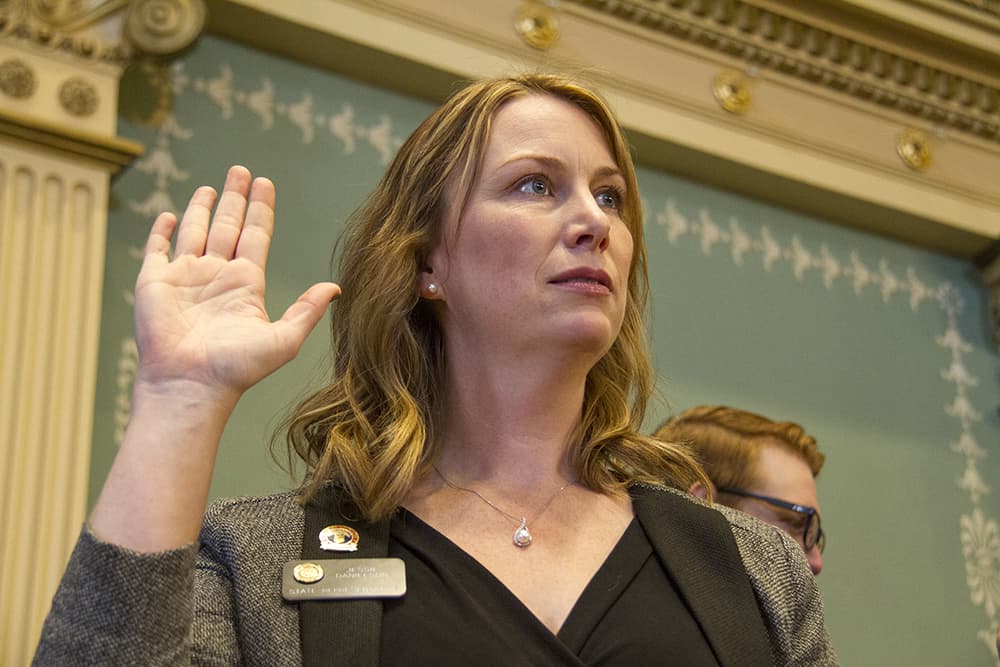
"When we initially were going for the bill and the legislation, the Department of Public Safety told us that the alert wasn't needed. That there weren't this many Native people going missing," Payment said. "Whenever you say I told you so, it's never a good thing."
Polis received the proposed changes to the office on May 15. He has 30 days to sign the bill, veto it or do nothing, in which case the bill will pass.
Payment said the changes will only bolster the office and help advocates accomplish their true goal of ending the crisis affecting the Indigenous community.
Since the MMIR Office's implementation, Payment said the list of missing and murdered cold cases involving Natives has gone from 13 identified cases to roughly 85. The increase is from the office parsing through old cases and reidentifying people by looking at last names and talking to community members.
Payment said this type of work and the alert are the first steps in ending the crisis. It's bringing awareness to the issues Indigenous people face and helping find community members before they become lost in the system.
But ultimately, Payment said it's a Band-Aid or more of a reactive approach as opposed to a proactive one. Once the task force can start collecting data, look more deeply into cases and actually figure out what the problem is, Payment said then the task force would no longer need to exist. That's the outcome she and advocates want.
"I have hope that eventually we can address the crisis and it won't be a crisis anymore and that we won't have a movement like MMIW and MMIR," Payment said. "Now we have this alert. We have this education going out to law enforcement and we're seeing this rate of one Native person going missing a week in Colorado and we're less than 1% of the population. So, now what are we going to do to essentially staunch the bleeding? That's kind of what we're hoping for in the next steps with this office. Capturing meaningful data, so we can start to make some more actual data-driven decisions."
